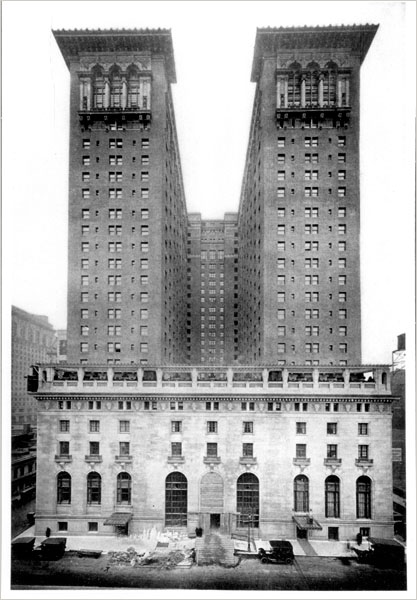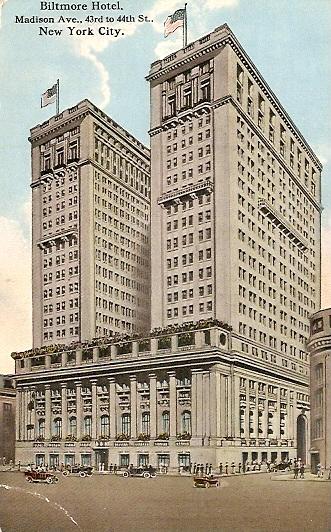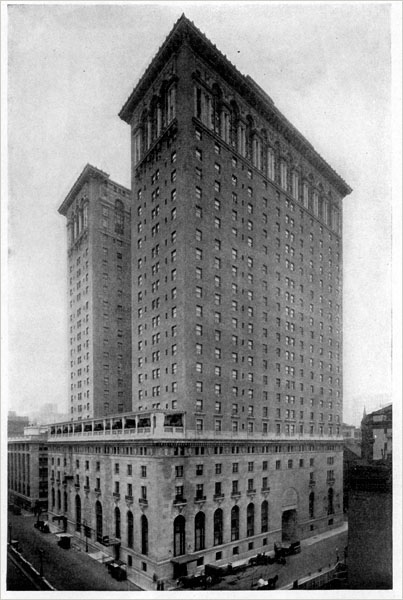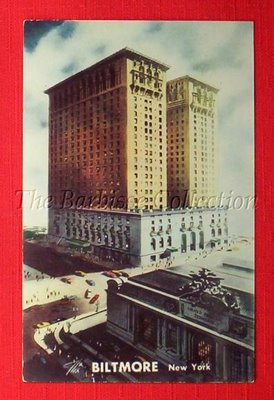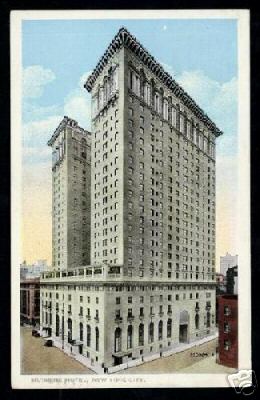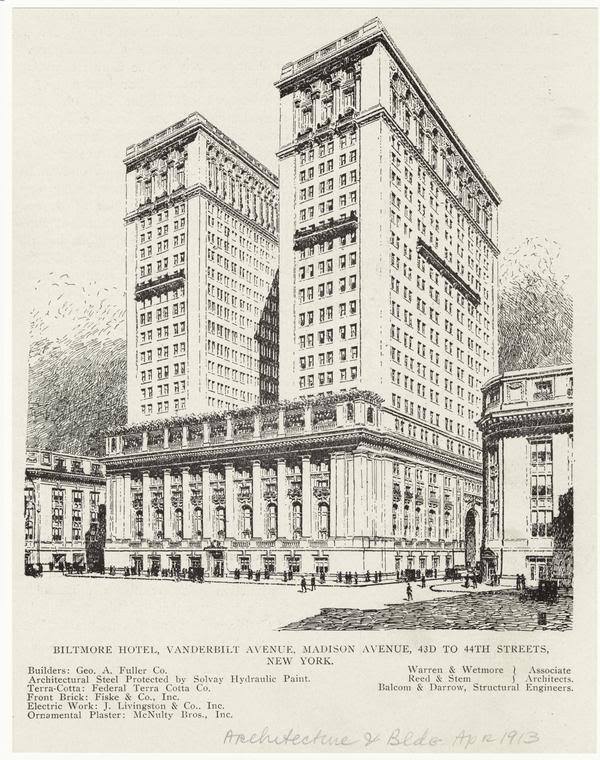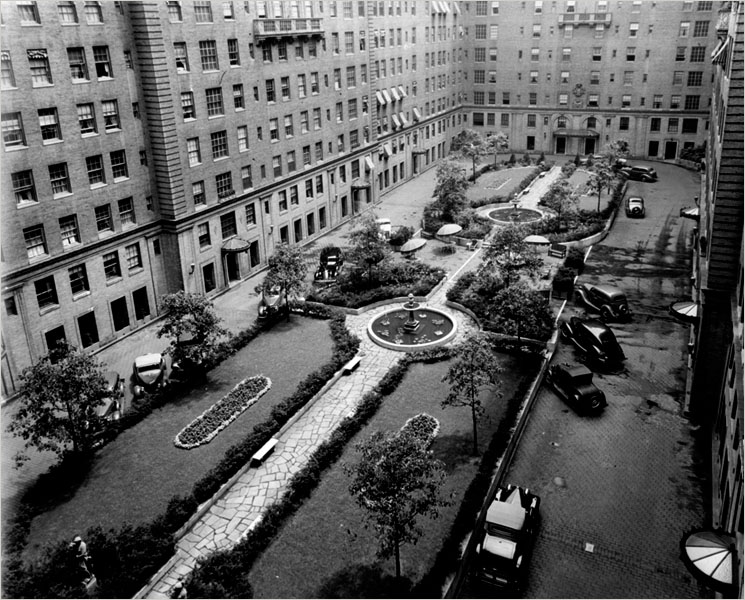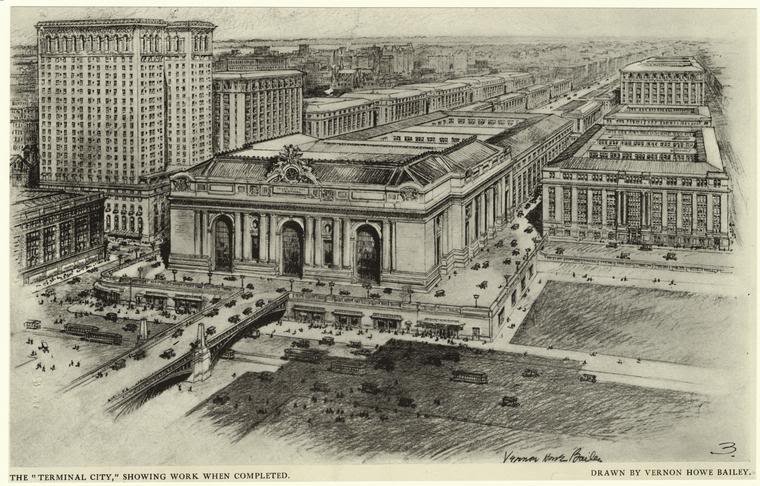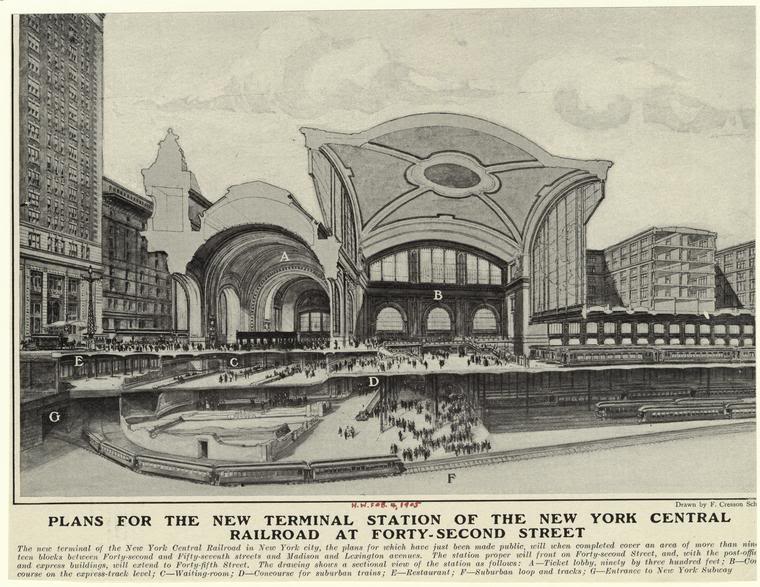|
BILTMORE HOTEL
43rd Street and Madison Avenue
1913-1981
Constructed by New York Central Railroad as an accessory to Grand
Central Terminal across the street, the Biltmore appealed to lovers for
decades. Zelda and F. Scott Fitzgerald honeymooned there so boisterously
that they were asked to leave, and the Biltmore’s solid bronze clock was
a popular meeting place for amorous couples.
When Holden Caulfield showed up in the lobby for a date in J.D.
Salinger’s 1951 novel, “The Catcher in the Rye,” he was struck by the
crowd of young women. “I was way early when I got there,” he recounted,
“so I just sat down on one of those leather couches right near the clock
in the lobby and watched the girls. A lot of schools were home for
vacation already, and there were about a million girls sitting and
standing around waiting for their dates to show up. Girls with their
legs crossed, girls with their legs not crossed, girls with terrific
legs, girls with lousy legs, girls that looked like swell girls.”
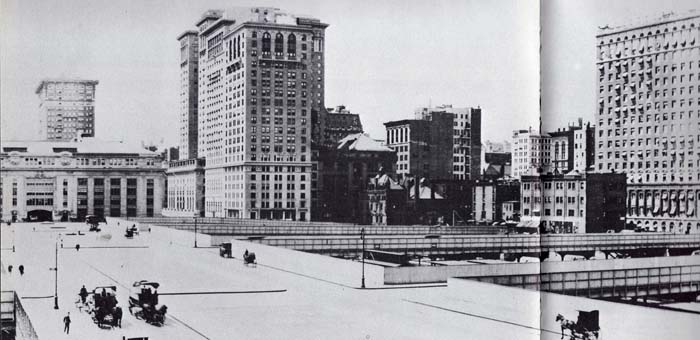
Equitable Trust Co. Building
and The Hotel Biltmore 1921.
The New York Biltmore was founded by Gustav Baumann, who purchased the
lease from the New York State Realty and Terminal Company, a division of
the New York Central Railroad. The design was by the architectural firm
of Warren and Wetmore, which also created the adjoining Grand Central
Terminal. The hotel had its own arrival station within the terminal,
nicknamed "The Kissing Room," with elevator access to the lobby. A
private elevator served only the Presidential Suite. The Tea Room
(a.k.a. Palm Court) echoed the design of the main concourse at the
Terminal. On the 22nd floor of the hotel was the grand ballroom, called
the Cascades; Bert Lown was the conductor in the hotel's early years.
Between the north and south towers was the Italian Garden, which
overlooked Vanderbilt Avenue and Grand Central Terminal. In the winter
months the garden was transformed into a ice skating rink. Henry Ford
tried to Broker World War I headquartered at The Biltmore, 1915.
The hotel opened on New Year's Day 1913, and was operated by Baumann
until his tragic death on October 15, 1914. John McEntee Bowman, the
Biltmore's manager under Mr. Baumann, took control of the lease and
operated the hotel thereafter.
The New York Biltmore Hotel ceased operation when the building was
gutted in August 1981 by its then owner the late Paul Milstein. The
demolition took place despite the building's landmark status and
concerted protests by preservationists. The hotel was stripped down to
its steel structural skeleton and rebuilt as Bank of America Plaza.
Though the bank is still the largest tenant, the building is today known
simply by its address, 335 Madison Avenue.
Link
http://travelwithterrynyc.blogspot.com/2009/05/gates-chelsea.html
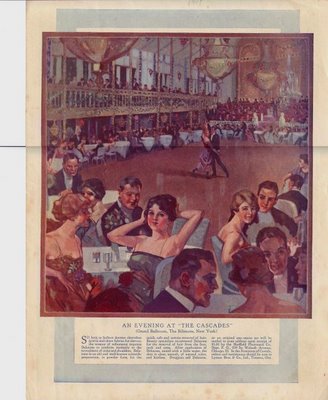
Built in 1913 as the Biltmore Hotel, the 29-story landmark hotel was
gutted down to its steel skeleton between 1981 and 1984 and rebuilt as a
modern glass office tower. The famous Biltmore clock was retained in the
building's new atrium lobby. It was known for some time as Bank of
America Plaza.
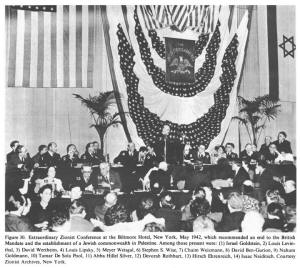
|
